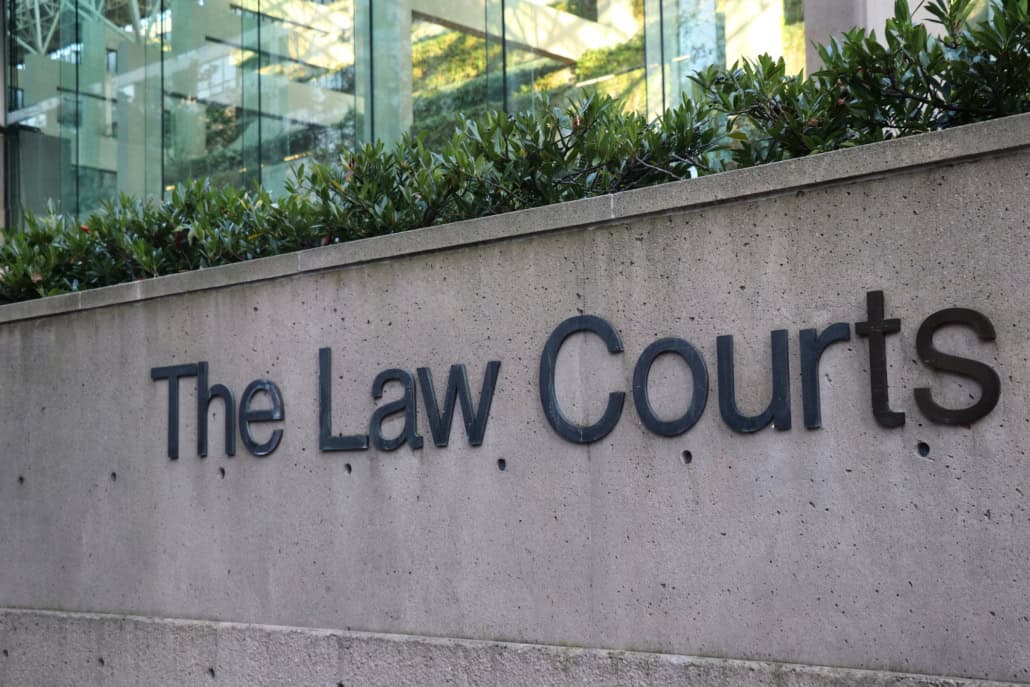May tax news: The tax cost of leaving (or losing) your job, deducting interest–and more

THE TAX COST OF LEAVING (OR LOSING) YOUR JOB
What happens for tax purposes if you leave your job — voluntarily or by being terminated — and your employer pays you money?
Typically, you might receive one or both of the following kinds of payments:
- An extension of your salary during a period while you are still officially employed. For example, you might be given 12 months’ notice of termination, and your salary and benefits continue during that period — whether or not you actually continue coming to the workplace.
(2) A severance payment. For example, you might get 12 months’ salary. This might come in one of several ways:
- Your employer offers you an “early retirement” package which you accept.
- You are fired and accept an offer of 12 months’ severance.
- You are fired and you do not accept your employer’s offer. Instead, you consult a lawyer, who threatens to sue your employer for wrongful dismissal. Perhaps you even start a lawsuit. You eventually reach a settlement, with your lawyer’s assistance, and the employer pays you the equivalent of 12 months’ salary.
- You are fired and you sue your former employer. The case does not settle before trial, and the Court awards you 12 months’ salary for wrongful dismissal.
Payments of type (1) above, which continue your salary, are treated as regular employment income, and are given the same tax treatment as your salary was before you were given notice. The same withholding at source applies as well — tax withholding that is approximately equal to the amount of tax you will have to pay on this income. Tax also continues to apply on any taxable benefits that continue while you are still receiving salary.
Payments of type (2) above — whether simply offered by the employer (and accepted), paid to settle a wrongful-dismissal lawsuit, or awarded by the court — fall into the definition of what the Income Tax Act calls a “retiring allowance”. This term also covers a payment genuinely made in recognition of long service when you retire.
A “retiring allowance” is taxable, and must be included in income on your tax return. So in some respects it does not matter whether you get a continuation of salary or a severance payment. However, there are a number of important differences between a “retiring allowance” and regular employment income:
- If you began your employment with this employer (or a related employer) before January 1, 1996, then part of the retiring allowance can be transferred to your RRSP instead of being taxed this year. You can transfer up to $2,000 for each calendar year (or part of a year) during which you were employed with that employer (or a related employer) before 1996.
As well, if you were not a member of a pension plan or deferred profit sharing plan to which your rights have vested, you can add an additional $1,500 for each such year during which you were employed before 1989.
If the above money is transferred directly by your employer to your RRSP, then no tax will be withheld from the payment. However, if this is not done, you can still do the transfer yourself, provided you do it by 60 days after year-end (the same deadline as for regular RRSP contributions).
- A “retiring allowance” is not considered employment income for tax purposes. (Technically, it is taxable under section 56 of the Income Tax Act, rather than under the employment-income sections, which are sections 5, 6 and 7.) This means that it does not create RRSP contribution room (except for pre-1996 employment described above), and does not count as “earned income” for purposes of the deduction for child-care expenses. It also means that you (and your employer) won’t have to pay Canada Pension Plan / Quebec Pension Plan contributions or Employment Insurance premiums on the “retiring allowance”, so if the payment is early in the calendar year when CPP/QPP and EI would be payable on employment income, a “retiring allowance” may be preferable.
- The withholding tax on the retiring allowance (other than any amount transferred directly to your RRSP as per above) is 10% for amounts up to $5,000, 20% of the total for $5000.01 to $15,000, and 30% of the total for $15,000.01 and over. (In Quebec, the federal withholding rate is reduced to 5%, 10% and 15% respectively.) This is only a prepayment of your tax; the actual tax you pay will be calculated on your tax return for the year by including the retiring allowance in your income, and you will receive a credit for the tax withheld. So if you are in a 50% tax bracket, you may need to set aside an additional 20% of the pre-tax amount to cover the tax you will owe next spring.
- If you become non-resident before you receive the retiring allowance, the only tax will be a flat 25% non-resident withholding tax, rather than the regular personal income tax at rates of up to 54%.
If you are considering leaving Canada, it may be a good idea to arrange to do so, and “cut your ties” with Canada sufficiently to become non-resident (see CRA Income Tax Folio S5-C1-F1), or become resident in the foreign country under Canada’s tax treaty with that country, before you receive the payment.
Is there any way to make the settlement tax-free?
Aside from the RRSP rollover described above, there are other ways in which payments for wrongful dismissal can become at least partially tax-free.
- If you sue your employer for an injury such as mental distress or for defamation (libel or slander), and the settlement or Court award explicitly allocates some amount to these kinds of damage, that amount can be non-taxable.
The CRA may challenge your failure to report such income, and could reassess you on the grounds that the payment really was for loss of employment, so the facts and the documentation have to be able to support the claim that the payment was for injury. Several taxpayers have succeeded with this argument in the Tax Court of Canada, however.
If you take this approach, you need to be prepared to live with some uncertainty for several years. There is always a good chance that your situation will not even be audited, let alone reassessed. Once three years have passed from the date of your Notice of Assessment for the year in which you receive the payment, the CRA normally cannot reassess you.
- Similarly, the CRA normally accepts that if you and your employer classify part of the award as damages for a human rights violation, then that portion will be tax-free (up to the maximum that could be awarded under the applicable human rights legislation).
- Along the same lines as above, it may be possible, in cases of severe wrongdoing by your employer, to have a Court classify part of your award as “punitive damages” or “exemplary damages”, which would be non-taxable.
- You can ask your employer to provide you with re-employment or retirement counselling services as part of the settlement. These are non-taxable benefits under the Income Tax Act.
(E) Amounts paid by the employer to your lawyer to cover your legal expenses are not taxable to you. Similarly, if you receive the funds and pay your lawyer yourself, the legal fees are deductible against the settlement, and so can reduce the “retiring allowance” or employment income on which you must pay tax.
Because of all the tax angles, it is crucial to do tax planning very early on in the process of making a claim for wrongful dismissal — right from the first letter you or your lawyer write to the employer. If you wait until the deal is done and a settlement is about to be paid to start thinking about income tax, it will probably be too late to stop the settlement from being fully taxable.

DEDUCTING INTEREST EXPENSE
Under the Income Tax Act, interest expense can be deducted from business income or property income if certain conditions are satisfied:
- There must be a legal obligation to pay interest. (In most cases this ensures that the recipient of the interest is required to report it as income.) An obligation to pay interest that is contingent or uncertain is disallowed. However, the legal obligation can be under an oral arrangement — provided the CRA or the Tax Court believes the obligation actually existed (e.g., Conrad Black v. The Queen, 2019 TCC 135).
- The amount deducted must be reasonable. If the borrowing is not at arm’s length (e.g., a loan from a family member) and the rate paid is higher than a commercially available interest rate, the CRA will normally disallow the excess.
- The interest is paid on borrowed money used for the purpose of earning income that is subject to tax. The CRA and the Courts generally require that the borrowed money can be traced this way. It is not enough to say that if you had not borrowed the money, you would have had to sell other assets that generate income. You need to show that the money you borrowed was directly used to invest in a business or in property that can generate taxable income.
- Alternatively, the interest can be paid on the unpaid purchase price of property that is used for the purpose of earning income from business or property (e.g., paying interest on a vendor takeback mortgage on a rental property). Again there needs to be a direct link between the property and the earning of income. (There are some other special cases where interest deduction is allowed as well.)
- The borrowed money, or the property, does not have to actually generate income, nor need it generate a profit after expenses. It has to be used with the intention of earning income. The Supreme Court of Canada ruled in the Ludco case (2001 SCC 62) that for shares, earning dividends need not be the primary purpose of the investment; an ancillary purpose is sufficient. The Court also ruled that an intention to earn some amount of income was sufficient, even though it was at a lower rate than was being paid out in interest.
- Traditionally, interest paid on borrowed money used to buy shares in a company was always considered to qualify, since shares can always pay dividends. However, in the Swirsky case (2014 FCA 36), the Federal Court of Appeal denied a deduction for interest on a loan used to buy family company shares, since the company had no history of paying dividends, so there was no “reasonable expectation of income”. Nevertheless, the CRA’s position in Income Tax Folio S3-F6-C1 1.70 is unchanged despite Swirsky; no history of dividend payment is needed, and common shares are normally presumed to meet the test, but there are exceptions, such as a stated policy that dividends will not be paid.
There have been many decisions from the Courts on interest deductibility, on a wide range of fact situations. For example, even if the property acquired goes down in value, the interest deduction can continue: Tennant (Supreme Court of Canada, 1996 CanLII 218). However, a taxpayer borrowing money to lend at no interest to his own company may not qualify (Scragg, 2009 FCA 180; Keybrand Foods, 2019 TCC 161), or may qualify if the borrowing is linked to future income earnings (Canadian Helicopters, 2002 FCA 30). In Penn Ventilator (2002 CanLII 871), the Tax Court allowed a company to deduct interest paid on a note it issued to repurchase its own stock; and in Trans-Prairie Pipelines (1970), interest paid to redeem preferred shares was deductible.
On the other hand, in the A.P Toldo Holding Corp. case (2013 TCC 416), interest on borrowed money used to redeem common shares to resolve a shareholder dispute was not deductible, as the company was a holding company and did not have a “financing and banking” business. So the Penn Ventilator rule may be quite restricted. In Black (2019 TCC 135), Conrad Black’s payment of a damage award was held to be an interest-bearing loan to his company that was jointly liable with him for the damages, so interest was deductible — even though the loan was not recorded in writing until much later.
Special rules in the Income Tax Act prohibit deduction of interest on loans taken out for certain purposes, such as to make RRSP, RESP or TFSA contributions. As well, special anti-avoidance rules prevent interest from being deducted on a “leveraged annuity” or a “10/8” life insurance policy. (These were structures that were used before 2013 to take advantage of the interest-deductibility rules.)
For corporations, especially large corporations that are part of a multinational group there are also other restrictions on interest deductibility introduced very recently. These rules, such as the “excessive interest and financing expenses limitation” and the “hybrid mismatch rules”, do not normally affect individual taxpayers.
As you can see, while the rules may sound straightforward, they can be hard to apply in practice. The above just touches briefly on the complexity of the interest deduction. If you are seeking to deduct interest, make sure that the funds you borrow are used directly to earn income that is reported on your tax return, and your deduction will normally be allowed.

FINDING THE LAW
Do you ever want to look up and read legislation (passed by Parliament or a provincial legislature), or Court cases that you have read about, whether in this newsletter or elsewhere? Here is a useful and free Web site to know about: canLii.org.
CanLII is the Canadian Legal Information Institute, a project of Canada’s law societies. It provides free and very efficient access to virtually all of Canada’s legislation, regulations and case law. You can search by title or case name, or search the full text of all the documents or a subset of them (e.g., just Tax Court of Canada cases, or just your province’s legislation).
Federal legislation is also available on laws.justice.gc.ca, but CanLII is somewhat easier to use.
Of course, if you are trying to read complex legislation such as the Income Tax Act, it is almost impossible to understand on its own, without the annotations and explanations that are provided by the publishers of the commercial editions, such as Thomson Reuters’ Practitioner’s Income Tax Act.
GST ON FIRST NATIONS RESERVES
Many people are unclear as to how sales taxes apply on First Nations reserves. Can you buy goods or gas cheaper on a reserve, because GST and HST don’t apply?
The answer is no — at least if the vendor is following the law.
Status Indians are eligible for special benefits under the Indian Act, including that their “property” on a reserve is not subject to tax. (Legally they are still called “Indians” under the Indian Act, even though the term First Nations is now preferred.) Although some status Indians no longer qualify for this exemption due to treaties that their nations have signed with Canada, most still do.
This means that status Indians can in many cases earn income that is not subject to income tax. It also means that they can buy goods that are tax-free when delivered to them on a reserve. For a purchase such as a car or truck, this can save them very substantial amounts of sales tax. (See CRA Technical Information Bulletin B-039 for details.)
However, these rules do not apply to goods that status Indians sell to other persons who are not status Indians. A store on a reserve can sell goods free of GST or HST to status Indians, but not to others. The store must charge and collect the tax. Otherwise the CRA will assess the store for the taxes not collected, plus interest and penalties.
This issue has gone to the Courts several times, and the Courts have consistently ruled that the Indian Act exemption does not protect a status Indian from having to collect sales taxes payable by non-Indians (e.g., the Pictou and Obonsawin decisions of the Federal Court of Appeal).
There is one more twist to these rules. The First Nations Goods and Services Tax Act creates a “First Nations GST”, which First Nations bands can choose to adopt on their reserves. Over 25 First Nations have done this, though some have recently terminated their FNGST. On the reserves where the FNGST applies, it looks just like the regular GST, and is administered by the Canada Revenue Agency just like the regular GST. (The only difference is that the CRA pays the revenues from the FNGST to the band.) So on those reserves, even status Indians have to pay the GST on all their purchases.
10-YEAR LIMITATION PERIOD ON TAX COLLECTION
What happens if you have an old debt owing to the CRA? Is there a deadline after which the CRA can no longer collect it from you?
The answer is yes — but the rule in question is very restrictive.
Under section 222 of the Income Tax Act, the CRA has 10 years to take collection action of any kind. Any legal collection steps, including if the taxpayer acknowledges the tax debt or makes any payment, restarts the 10-year period. Collection from another party for the taxpayer’s debt (e.g. where the taxpayer has transferred property or money to a family member) also restarts the period. Furthermore, the period is extended if the taxpayer becomes non-resident, or if collection action is restricted for any reason (such as an objection being filed or because of a proposal filed under the Bankruptcy and Insolvency Act).
So if you have an old debt that the CRA seems to have forgotten about, and the CRA has not taken any legal steps to assess you or someone else to try to collect the debts, the debt has likely expired after 10 years of such inaction, and the CRA may be prohibited from collecting it from you.
The same rules also apply for tax debts of other kinds, such as for GST/HST, excise duties and excise taxes.

AROUND THE COURTS
Moving TFSA to a different institution was expensive
You likely know that the Tax-Free Savings Account (TFSA) allows you to contribute a certain amount for each year since 2009 that you were over 18, and that all the profits in a TFSA accumulate tax-free, whether they are earned as interest, dividends or capital gains. And that there is no cost to taking money out of a TFSA to use for any purpose — no withholding tax applies, and no tax will be payable on your tax return for the year as a result of the withdrawal.
You may also know that if you take an amount of money out of your TFSA, you can put the same amount back in later — but only starting the next January 1. Otherwise, you are over-contributing, and you may be liable for a penalty tax of 1% per month of the overcontribution.
In a recent Federal Court decision, Breton v. Canada, 2024 FC 555, Mr. Breton, who lived in Quebec, accidentally ran afoul of this rule in an interesting way. He had $40,000 in a TFSA with Caisse Desjardins, and decided to transfer this TFSA to the Banque Nationale. But instead of completing a form to have the transfer take place directly between the two institutions, he simply took the $40,000 out of his Caisse Desjardins TFSA and deposited it to a TFSA at Banque Nationale — without waiting until the next January 1.
The CRA assessed Mr. Breton over $2,000 penalty tax on his overcontribution. He applied for a waiver of this tax, which the CRA has the power to grant if the taxpayer made a “reasonable error” and promptly withdraws the overcontribution.
The CRA refused to waive the tax. CRA policy is that taxpayers should know how the TFSA rules work, and that they have to wait until January 1 if they withdraw funds from a TFSA, before redepositing them.
Mr. Breton filed an application for “judicial review” in the Federal Court. In such an application, the Court is not allowed to substitute its own judgment as to whether the tax should be waived. All it can do is ensure that the CRA reached a “reasonable” decision and explained its reasons in a way that is “transparent, intelligible and justified”. If the CRA didn’t, the Court can send the matter back to the CRA for a new decision.
The judge had sympathy for Mr. Breton’s situation, but dismissed the application for judicial review. The CRA is entitled to have, and to follow, a policy of refusing to waive the penalty tax in cases where the taxpayer simply did not understand the TFSA rules.
Like many other such decisions, this Court case is a warning to taxpayers to make sure they follow the rules when withdrawing funds from a TFSA!
***
This letter summarizes recent tax developments and tax planning opportunities; however, we recommend that you consult with an expert before embarking on any of the suggestions contained in this letter, which are appropriate to your own specific requirements. For assistance with your tax planning and accounting needs, contact a member of our team.


